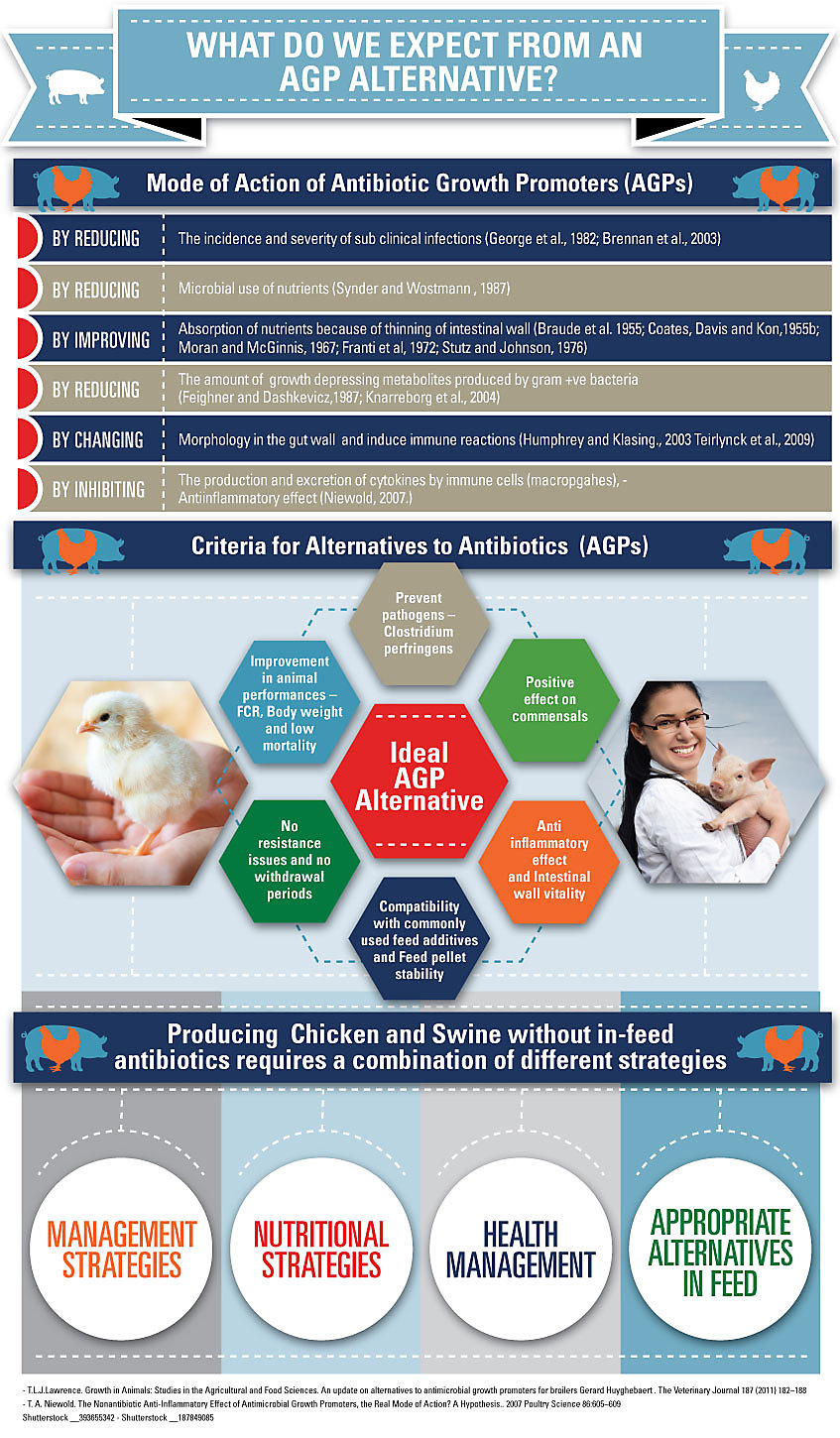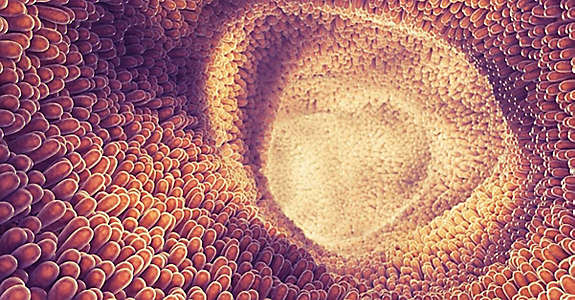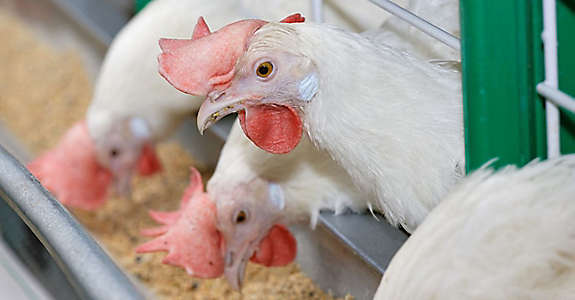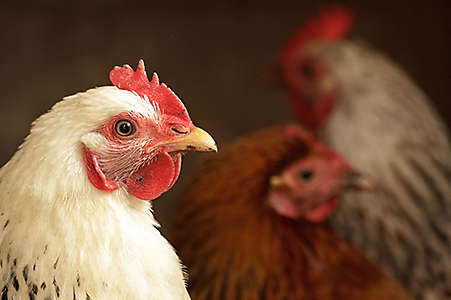What Do We Expect From an AGP Alternative?
Mode of Action of Antibiotic Growth Promoters (AGPs)
- By reducing the incidence and severity of sub clinical infections (George et al., 1982; Brennan et al., 2003)
- By reducing microbial use of nutrients (Synder and Wostmann, 1987)
- By improving absorption of nutrients because of thinning of intestinal wall (Braude et al. 1955; Coates, Davis and Kon, 1955b; Moran and McGinnis, 1967; Franti et al, 1972; Stutz and Johnson, 1976)
- By reducing the amount of growth depressing metabolites produced by gram +ve bacteria (Feighner and Dashkevicz, 1987; Knarreborg et al., 2004)
- By changing morphology in the gut wall and induce immune reactions (Humphrey and Klasing., 2003 Teirlynck et al., 2009)
- By inhibiting the production and excretion of cytokines by immune cells (macrophages), - Antiinflammatory effect (Niewold, 2007)
Criteria for Alternatives to Antibiotics (AGPs)
- Prevent pathogens - Clostridium perfringens
- Positive event on commensals
- Anti-inflammatory effect and intestinal wall vitality
- Compatibility with commonly used feed additives and feed pellet stability
- No resistance issues and no withdrawal periods
- Improvement in animal performances - FCR body weight, and low mortality
Producing Chicken and Swine Without In-Feed Antibiotics Requires a Combination of Different Strategies
- Management strategies
- Nutritional strategies
- Health management
- Appropriate alternatives in feed
T.L.J.Lawrence. Growth in Animals: Studies in the Agricultural and Food Sciences. An update on alternatives to antimicrobial growth promoters for broilers Gerard Huyghebaert. The Veterinary Journal 187 (2011) 182-188
T.A. Niewold, The Nonantibiotic Anti-Inflammatory Effect of Antimicrobial Growth Promotors, the Real Mode of Action? A Hypothesis. 2007 Poultry Science 86:605-609 Shutterstock_393655342 - Shutterstock__18784985




